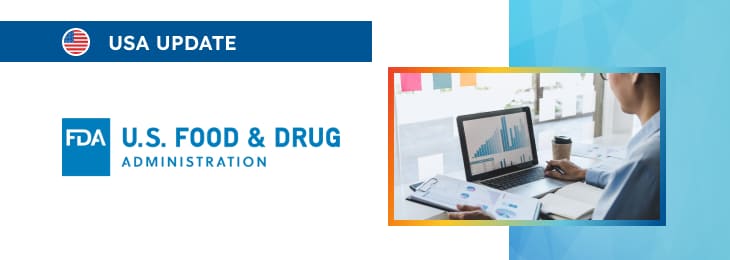The new article provides additional clarifications with respect to the development of use-related risk analyses.

Table of content
The Food and Drug Administration (FDA or the Agency), the US regulating authority in the sphere of healthcare products, has published a draft guidance document dedicated to the purpose and content of use-related risk analyses for drugs, biological products, and combination products. Once finalised, the document will provide an overview of the applicable regulatory requirements, as well as additional clarifications and recommendations to be taken into consideration by manufacturers and other parties involved in order to ensure compliance.
At the same time, it is important to mention that provisions of the guidance documents issued by the FDA are non-binding in their legal nature, nor are they intended to introduce new rules or impose new obligations. Furthermore, the authority explicitly states that an alternative approach could be applied, provided such an approach is in line with the respective regulations and has been agreed with the authority in advance.
URRA Development: Basics
The development of a Use-Related Risk Analyses (URRA) is a critical process for ensuring the safety and effectiveness of drug, biological, and combination products. When constructing a URRA, sponsors must consider all intended uses of the product, potential user populations, and the environments in which the product is likely to be used.
These factors can significantly influence product design, user tasks, and the subsequent risks and potential harms associated with the product’s use. To gain a comprehensive understanding of human factors (HF) and use-related risks, sponsors are encouraged to consult the FDA’s guidance on Applying Human Factors and Usability Engineering to Medical Devices.
The guidance provides an appendix that includes a simplified example of a URRA in a table format, demonstrating one potential approach to structuring a URRA. However, it is not the only acceptable format; sponsors may choose an alternative format that meets the necessary regulatory requirements.

Identifying User Tasks
The first step in the URRA process involves creating a detailed and systematic list of all tasks associated with the use of the product.
These tasks can be divided into two categories:
- User Tasks: Tasks related to the physical interaction with the product.
- Knowledge Tasks: Tasks that involve interpreting and applying information provided by the product’s labeling.
Sponsors can identify these tasks through methods such as task analysis or contextual inquiry. A comprehensive list ensures that all potential risks related to product use are considered.
Identifying Potential Use Errors
After identifying the user tasks, the sponsor must determine what use errors could reasonably be expected to occur for each task. It is crucial to consider not only intended users but also any foreseeable unintended users and reasonably foreseeable misuse scenarios.
For instance, a common use error might involve task omission, where a user fails to complete a necessary task. To identify more complex errors, sponsors can use analytical tools such as Failure Modes and Effects Analysis (FMEA) or Fault Tree Analysis (FTA).
Additionally, sponsors can draw on experience from clinical trials, literature reviews, adverse event reports, and safety communications to identify potential use errors. If the product is similar to other marketed products, sponsors are encouraged to analyze data from postmarket safety databases and other sources to identify known risks associated with similar products.
Identifying Potential Harms
For each identified use error, sponsors should assess the potential harms and clinical impacts. The clinical impact can vary significantly depending on factors such as the severity of the disease being treated, the medication’s therapeutic index, dosage frequency, urgency of treatment, and the consequences of underdosing or overdosing.
As explained by the FDA, sponsors should consider the impact of both one-time and repeated use errors. A single use error might have a minor impact, but repeated errors could lead to significant harm.
Therefore, a thorough assessment should take into account both types of errors to fully understand the potential clinical implications and the acceptability of residual risks.
Categorizing Tasks
Tasks identified in the URRA should be categorized as either critical or non-critical. For combination products, a critical task is defined as a user task that, if performed incorrectly or not performed at all, could cause harm to the patient or user, including compromised medical care.
This categorization helps prioritize tasks that require the most stringent risk controls and mitigations.
Identifying Risk Controls
For each potential use error, sponsors must identify the risk controls in place to reduce or eliminate the associated risks and harms. Risk controls may include design features, protective measures, and information provided for safety.
For example, if a product is prone to delivery line occlusions in an on-body infusion system, an alarm feature might be implemented to alert users to the issue, prompting corrective action. The FDA expects sponsors to prioritize eliminating risks through product design when feasible, rather than relying solely on labeling or user training.
The hierarchy of risk controls, based on ISO 14971 standards, is as follows:
- Inherently Safe Design and Manufacture: Designing the product to be as safe as possible by eliminating hazards through design choices.
- Protective Measures: Incorporating protective features within the product itself to guard against identified risks.
- Information for Safety and Training: Providing necessary safety information, such as labeling, and training users to safely operate the product.
Sponsors should aim to apply the most effective risk controls at the design stage to ensure the product’s safety and usability.
Identifying Evaluation Methods
Once risk controls are established, sponsors need to specify how these controls have been or will be evaluated. This could include detailing evaluation methods within a human factors validation study protocol.
These evaluations ensure that the risk controls effectively mitigate identified risks and maintain user safety.
Updating the URRA
The authority additionally emphasizes that URRA should be a living document, updated throughout the product lifecycle. Updates are necessary when changes occur in the product’s user interface or risk controls, or when new risks are identified during development or post-marketing.
Sponsors are encouraged to follow the FDA guidance on Human Factors Engineering Principles for Combination Products when making these updates, ensuring that any design changes continue to meet safety standards.
Conclusion
In summary, the development of a URRA is a comprehensive process that plays a vital role in identifying and mitigating risks associated with the use of drugs, biological products, and combination products. Moreover, maintaining and updating the URRA throughout the product lifecycle ensures that emerging risks are managed and that the product remains safe and effective for its intended use.
How Can RegDesk Help?
RegDesk is an AI-powered Regulatory Information Management System that provides medical device companies with regulatory intelligence for over 120 markets worldwide. It can help you prepare and publish global applications, manage standards, run change assessments, and obtain real-time alerts on regulatory changes through a centralized platform. Global expansion has never been this simple.

